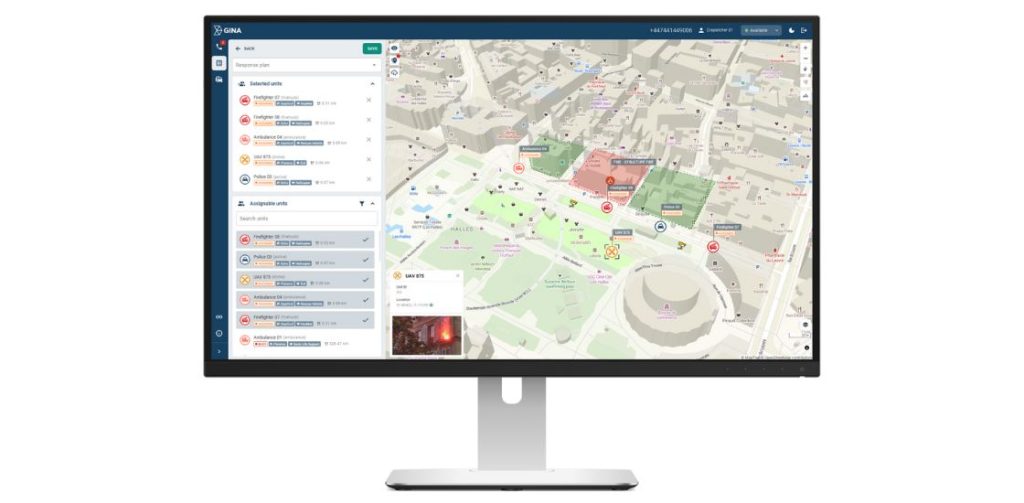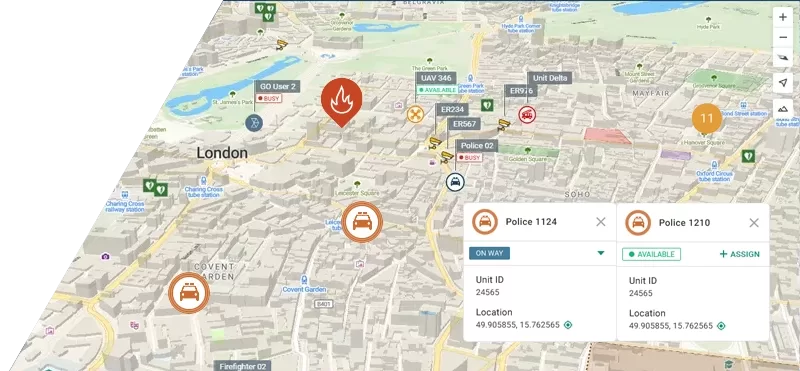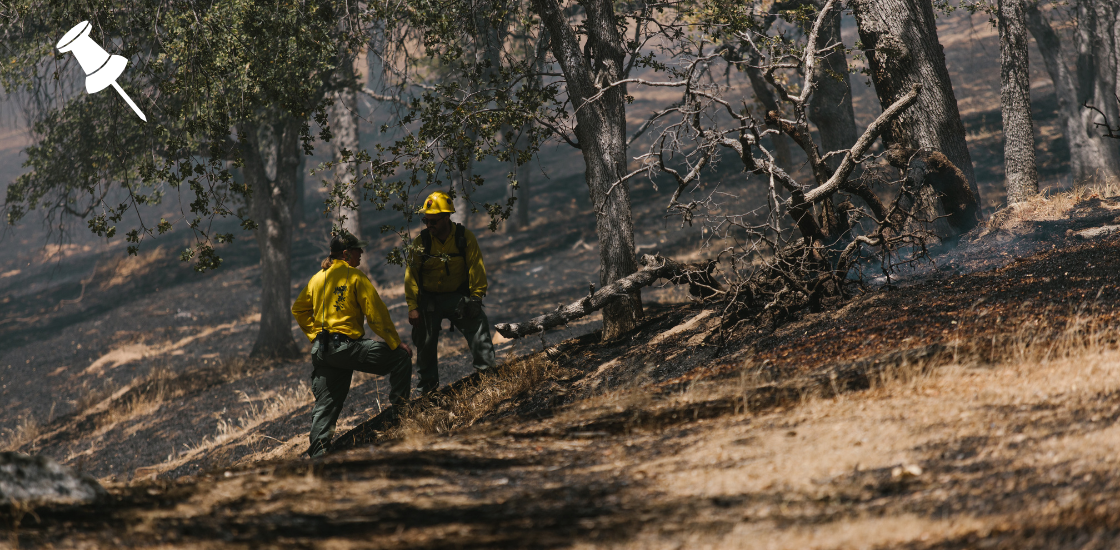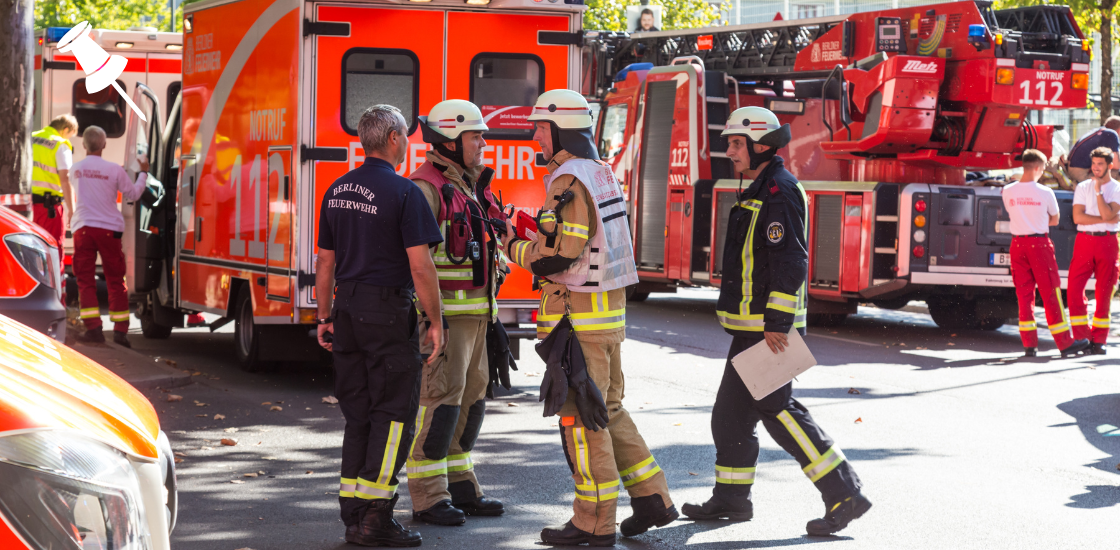Table of Contents
- Introduction to Fire EMS CAD
- What is Fire EMS CAD and How Does It Work?
- Benefits of Fire EMS CAD for Emergency Response
- Key Features to Look for in Fire EMS CAD Systems
- Challenges in Implementing Fire EMS CAD Solutions
- How Fire EMS CAD Improves Interagency Communication
- Future Trends in Fire EMS CAD Technology
- Conclusion: Why Fire EMS CAD Is Critical for Public Safety
- FAQ: Fire EMS CAD
What is Fire EMS CAD and How Does It Work?
Fire EMS CAD refers to a suite of software tools designed to support the real-time dispatch of emergency services. At its core, a CAD system like our Smart CAD automates the process of taking calls, assigning units, and tracking incidents.
Here’s how it typically works:
- Call intake: 911 or other emergency calls are received by a dispatcher.
- Data input: The dispatcher enters incident details into the CAD system.
- Unit assignment: Based on location, availability, and resource type, the system suggests or automatically assigns fire or EMS units.
- Real-time tracking: Units are tracked via GPS, and updates are provided in real-time.
- Communication: The system enables seamless communication between dispatchers and responders.
Benefits of Fire EMS CAD for Emergency Response
Implementing a Fire EMS CAD system comes with a host of operational and strategic advantages:
- Faster Response Times: Automated unit selection reduces decision-making time.
- Improved Accuracy: Location and unit data minimizes human error.
- Centralized Information: Dispatchers can access incident history, maps, and responder status all in one place.
- Better Resource Allocation: Helps prevent over-deployment and ensures appropriate units respond.
- Data Collection and Reporting: Post-incident reviews are enhanced with accurate logs and analytics.
Key Features to Look for in Fire EMS CAD Systems
When evaluating a Fire EMS CAD solution, agencies should prioritize certain core features:
- Integrated GIS Mapping: Real-time maps to show unit locations and route optimization.
- Mobile Access: Apps or tablets in fire trucks or ambulances for instant updates.
- Interoperability: Ability to integrate with RMS (Records Management Systems), AVL (Automatic Vehicle Location), and other tools.
- User-Friendly Interface: Intuitive design to reduce training time.
- Custom Alerts: For high-priority calls, hazardous materials, or known trouble locations.
- Redundancy and Security: Ensure uptime and data protection.
Challenges in Implementing Fire EMS CAD Solutions
While the benefits are substantial, there are also significant challenges in adopting fire EMS CAD technologies:
- High Initial Costs: Licensing, training, and hardware can be expensive.
- Resistance to Change: Personnel may be hesitant to adopt new systems.
- Integration Complexities: Aligning with legacy systems or cross-agency tools can be complicated.
- Training Requirements: Effective use requires ongoing education.
- Data Overload: Too much information without filtering can overwhelm responders.
How Fire EMS CAD Improves Interagency Communication
One of the most transformative aspects of modern fire EMS CAD like Smart CAD is their ability to improve coordination between agencies. With mutual aid becoming more common, CAD systems must:
- Share Information Seamlessly: Dispatchers from different jurisdictions can access incident data in real time.
- Enable Joint Responses: Units from multiple agencies can be dispatched simultaneously and tracked via one platform.
- Standardize Protocols: Having unified data formats and communication protocols simplifies collaboration.
This kind of interoperability improves situational awareness and speeds up complex responses like structure fires, mass casualty incidents, and hazardous material spills.

Future Trends in Fire EMS CAD Technology
The field of fire EMS CAD (Computer Aided Dispatch) continues to evolve rapidly. Emerging trends include:
- AI and Predictive Analytics: Using historical data to anticipate where emergencies are likely to occur.
- Cloud-Based CAD: Reduces infrastructure costs and allows for easier updates and scalability.
- Integrated Video Feeds: Dashcams and body cams feeding into the CAD system for situational awareness.
- Natural Language Processing: Automated call transcription and incident creation using AI.
- Wearables and IoT Integration: Smart sensors on personnel and gear connected directly to CAD.
Agencies investing in forward-looking technologies will have a distinct operational advantage.
Conclusion: Why Fire EMS CAD Is Critical for Public Safety
In a landscape where emergencies are increasingly complex and resources are stretched thin, fire EMS CAD systems play a pivotal role. They serve not just as dispatch platforms but as comprehensive coordination tools that enhance the safety of responders and the public alike.
By choosing the right CAD system and committing to proper training and integration, fire and EMS agencies can significantly elevate their readiness and effectiveness.
FAQ: Fire EMS CAD
Q1: What does a fire EMS CAD system do?
A fire EMS CAD system automates and manages dispatch operations by collecting call data, assigning resources, and facilitating communication between dispatchers and emergency responders.
Q2: Is fire EMS CAD only used by large departments?
No. While large departments often have more complex systems, many CAD providers offer scalable solutions suitable for small or volunteer departments.
Q3: Can CAD systems be integrated with 911 call centers?
Yes. Most modern CAD systems are designed to integrate directly with PSAPs (Public Safety Answering Points) to streamline call intake and dispatch.
Q4: Are CAD systems expensive?
Costs vary significantly. Cloud-based CADs can reduce upfront infrastructure expenses, while high-end systems for major cities can be more costly. However, the return on investment is often justified by improvements in response and efficiency.
Q5: How secure are fire EMS CAD systems?
Security is a major focus for vendors. Encryption, redundancy, and access controls are standard features. Agencies should also follow cybersecurity best practices.
Q6: What kind of training is needed to use a CAD system?
Training ranges from a few days for basic users to weeks for administrators and technical staff. Ongoing education is recommended as systems evolve.










